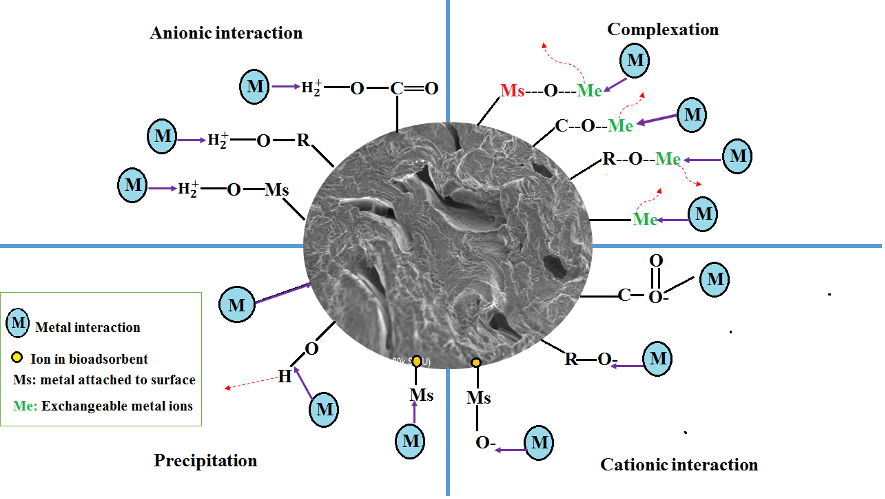 |
|
The effect of the adsorption capacity of Pb (II) on the shell of Opuntia ficus (tuna) was evaluated as a function of the adsorbent dose and initial contaminant concentration, in a batch system. The biomaterial was characterized by a nitrogen adsorption-desorption isotherm applying the BET equation, obtaining a surface area of 2.105 m2/g. FTIR reported the presence of hydroxyl, carbonyl, alcohol and methoxy groups. SEM analysis showed that the surface of the tuna shell has the presence of mesopores and that after adsorption Pb (II) forms micro-complexes and precipitations in the exposed area due to ion exchange with the functional groups. EDS analysis after adsorption confirmed a high content of the metal in the tuna shell. 0.1 g of adsorbent and 90 mg/L were determined as the best conditions for adsorption, reporting a maximum removal capacity of 40.97 mg/g. The pseudo second-order and Elovich models adjusted the experimental data on kinetics; the isotherm was described by the Langmuir equation, determining that the process is controlled by chemisorption and occurs in a monolayer. The results found have potential application in the treatment of wastewater from some industries and mining in South America and the Caribbean Region.
Keywords: adsorption, bio-adsorbent, chemisorption, Langmuir model.
|
|
 |

